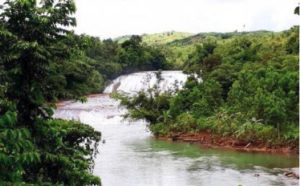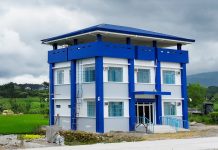
TACLOBAN CITY — The national government has approved a P1.03-billion fund to finance the construction of roads leading to tourist destinations in Eastern Visayas in 2020, more than double than last year’s allocation.
The Tourism Road Infrastructure Program (TRIP) will provide funding to 29 new and ongoing road projects in the bid to improve access to identified tourism sites, said Department of Tourism Regional Director Karina Rosa Tiopes on Wednesday.
This year’s funding is higher than the P499 million spent for TRIP in 2019 with 17 listed projects.
“The impact was not just about improved accessibility of tourist to the destination, but making the lives of locals better. It generates more income to people in the communities,” Tiopes said.
The projects include access road leading to Talustusan Falls in Naval, Ulan-Ulan and Bagongbong Falls in Almeria, all in Biliran province; the road to Borongan-Llorente closed-canopy forest area in Maydolong, Eastern Samar; Coastal Boulevard road in Catarman, circumferential road in Capul, and road leading to Pinipisakan Falls in Las Navas in Northern Samar.
In Leyte province, these projects are access roads leading to MacArthur Landing Memorial Park in Palo, diving site in Capoocan, Buga-Buga Hills in Villaba, Lake Danao in Ormoc City, Masaba Falls in Palompon, Shrine of St. Anthony de Padua in Baybay City, Lintaon Peak in Baybay City, and Malaguicay Falls in Abuyog.
Also funded this year are roads leading to Mapaso Hot Spring in Calbayog City, Lulugayan Falls in Calbiga, Balantak Falls in Basey, Catbalogan City Circumferential Road, Rock Islet in Daram, all in Samar province; access roads to Taglinao Falls in San Francisco, Anas view deck in Padre Burgos, bird sanctuary and mangrove site in Saint Bernard, Crater Lake in San Juan, Fatima Hills in Macrohon, Guinsaugon Lake in Saint Bernard, Ollies wall dive site in Liloan, and Limasawa circumferential road, all in Southern Leyte province.
“Most of these destinations are located in upland communities, which will not just boost tourism, but transport of agriculture products to the town center,” Tiopes added.
Launched in 2012, the project, which is a convergence of DOT and the Department of Public Works and Highways has three stages of prioritization criteria — prequalification, prioritization, and readiness.
Under prequalification, priority for funding are those projects with a development map, whose location is within 60 kilometers or less from a tourism gateway, a concept study and a record of consultation with at least one stakeholder group, endorsed by the Regional Development Council.
In the prioritization stage, highly considered are road projects with nearby accommodation facilities, pre-feasibility study, preliminary engineering design, and concept study. This phase also looks into tourist traffic in the area.
A road project is considered ready for implementation if it is supported by technical road readiness documents to be evaluated and scored by the DPWH. It must also have undergone a series of consultations involving key stakeholders from the private and government sectors.
(SARWELL Q.MENIANO/PNA)



